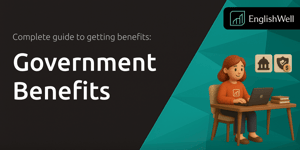
In an era of unpredictable central bank policies and soaring interest rates, investors are seeking ways to protect capital while still capturing meaningful returns. Amid this turbulence, lower price volatility and reduced capital losses have turned the spotlight toward short-duration bonds. These instruments, with maturities typically under two to three years, offer unique advantages that help cushion portfolios against the shocks of aggressive rate-hiking cycles.
Short-duration bonds have emerged as a defensive cornerstone for conservative and growth-oriented investors alike. By their very nature, these bonds exhibit near-cash equivalents with high liquidity, allowing market participants to buy or sell without incurring large price concessions.
During periods of rising yields, long-duration bonds can suffer steep mark-to-market declines. In contrast, shorter maturities experience less sensitivity to interest rate fluctuations, translating into steadier performance and peace of mind for asset managers and individual savers.
The dramatic inversion of yield curves in major economies over recent quarters has reshaped the fixed income landscape. For the first time in years, money market funds and short-term Treasuries are offering yields that rival, or even exceed, longer maturities. This phenomenon has unlocked attractive risk-adjusted income opportunities for investors willing to embrace shorter horizons.
For example, during the most recent Fed hiking campaign, one- to three-month Treasury bills posted roughly +3% returns, while intermediate-term Treasuries declined by nearly 7%. The pull-to-par effect boosting returns further sweetens the appeal, as bonds purchased at discounts naturally gravitate back to face value upon maturity.
To crystallize the contrast between short-duration and long-duration bonds in a rate-hiking environment, consider the following comparison:
Constructing a resilient portfolio demands careful calibration of duration and credit risk. Investors can use short-duration government bonds as a defensive anchor and selectively add short-dated corporate bonds for enhanced income. Yet, the elevated credit spreads over risk-free bonds require diligent credit analysis and active monitoring.
Active managers that blend macroeconomic insights with security-level due diligence are often best positioned to navigate bouts of volatility. As spreads widen during economic slowdowns, nimble trading and structural understanding of credit cycles can unearth value.
Once a central bank signals the end of its rate-hiking cycle, short-duration bonds have historically delivered solid returns after peak rate cycles. As interest rates stabilize or begin to ease, the reinvestment of coupons at still-elevated yields, coupled with modest price appreciation, can generate attractive total returns.
Investors who position early can capitalize on this window of opportunity, capturing both the residual carry from higher coupons and potential capital gains as yields retrace lower. This dual benefit underscores the tactical appeal of maintaining an allocation to short-duration bonds throughout the rate cycle.
In a financial environment characterized by rapid policy shifts and uncertain growth prospects, short-duration bonds serve as a source of stability and optionality. By blending them thoughtfully with other asset classes, investors can build portfolios that withstand shocks while still capturing meaningful yield.
Ultimately, the appeal of short-duration bonds in rate-hiking environments lies in their unique blend of capital preservation, liquidity, and return potential. By understanding these instruments’ strengths and deploying them with discipline, investors can navigate volatile markets with confidence and purpose.
References













